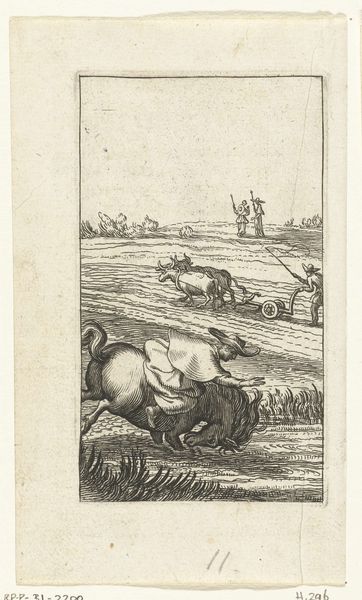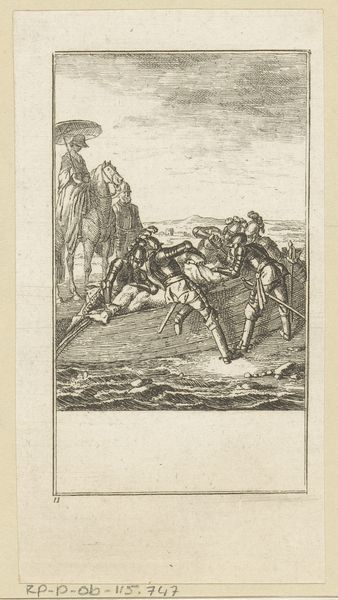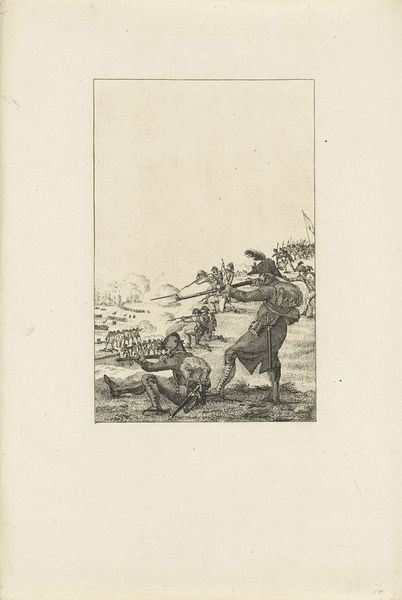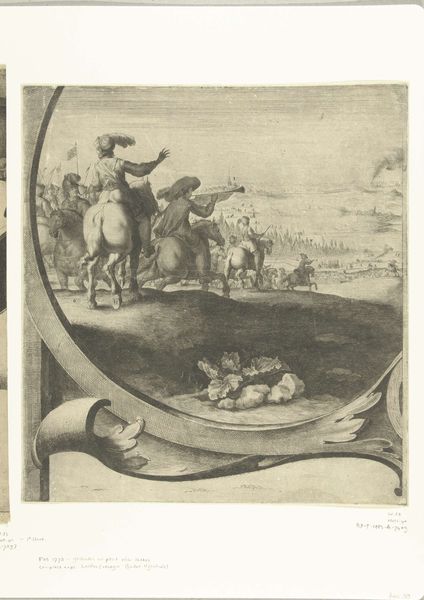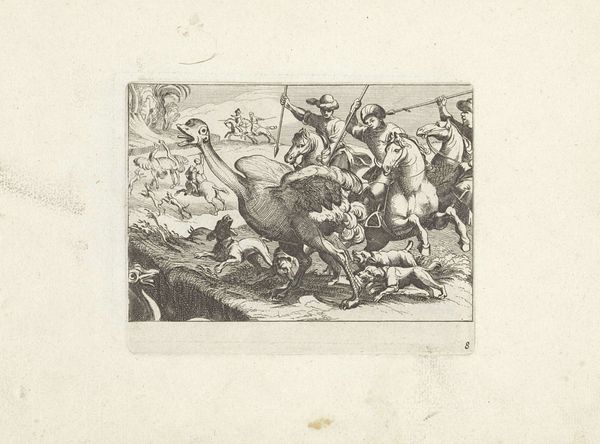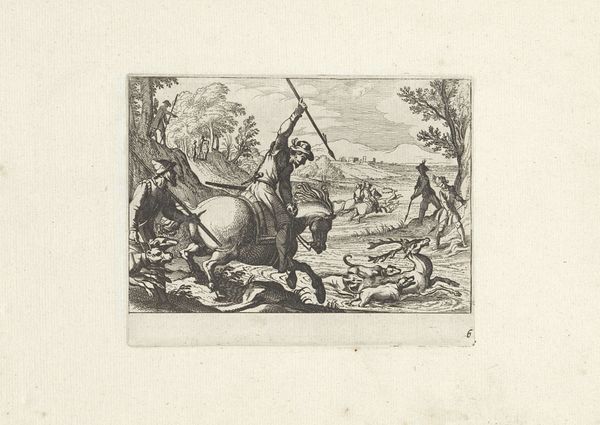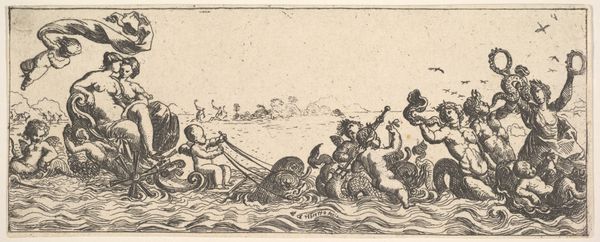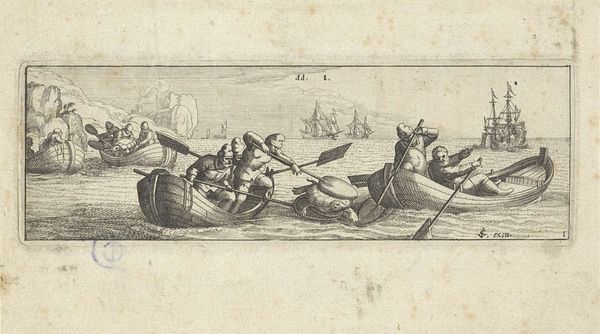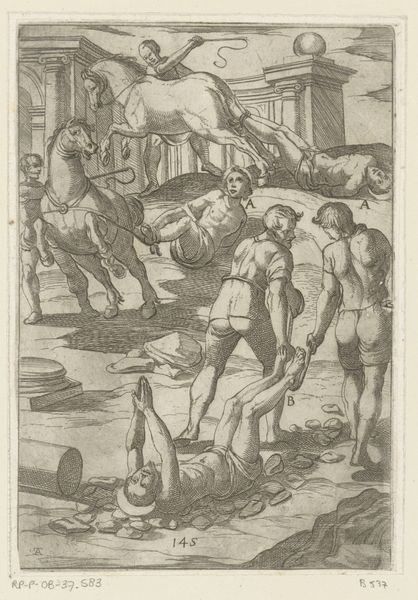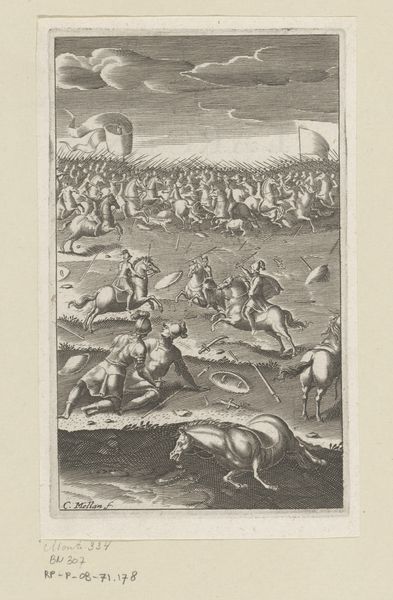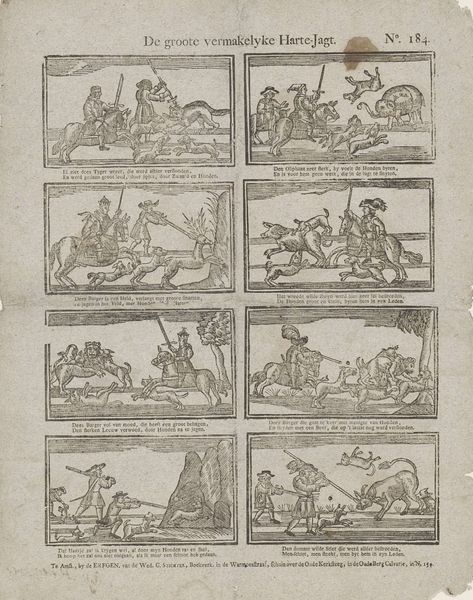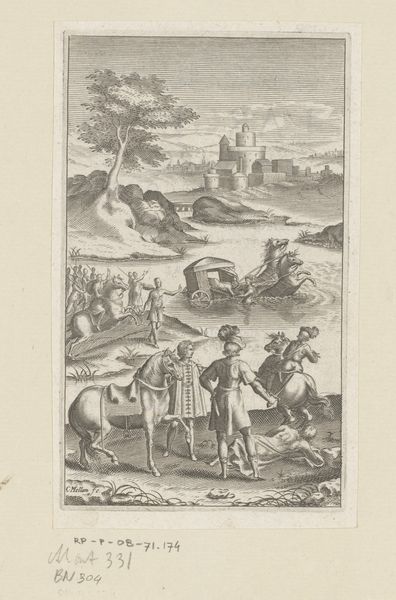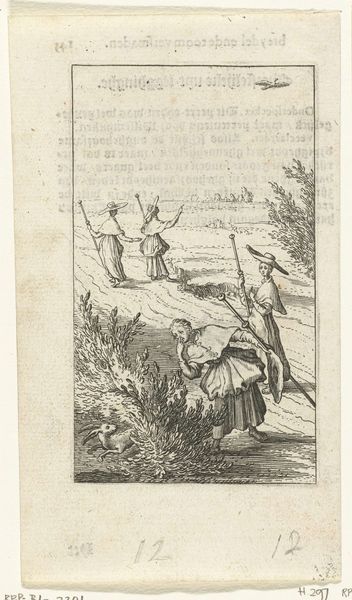
Illustratie voor 'Den Arbeid van Mars' van Allain Manesson Mallet 1672
0:00
0:00
romeyndehooghe
Rijksmuseum
drawing, print, ink, engraving
#
drawing
#
baroque
# print
#
ink
#
pen-ink sketch
#
horse
#
genre-painting
#
history-painting
#
engraving
Dimensions: height 185 mm, width 111 mm
Copyright: Rijks Museum: Open Domain
Editor: This is an illustration created around 1672 by Romeyn de Hooghe, entitled 'Illustration for 'The Labour of Mars' by Allain Manesson Mallet,' currently housed in the Rijksmuseum. It seems to be pen and ink with engraving. There is quite a bit going on here: cannons being prepared, cannons firing, and some horses interacting at the bottom. What jumps out at you? Curator: Immediately, the composition strikes me. The artist employs a distinct hierarchical arrangement, separating the illustration into horizontal registers. The upper tiers depict the tools of warfare - cannons and munitions - rendered with geometric precision. Note the linear perspective and how it flattens as we approach the upper register. Editor: Yes, I see how the use of line really defines the cannons. What about the placement of the figures? Curator: Indeed. The human figure, relegated to the middle ground, serves as an intermediary, an operator of the machines of war. Below, the horses introduce a sense of dynamism and perhaps chaos, contrasting with the calculated order above. One may consider this in terms of semiotics; do the cannons communicate control while the horses intimate disorder? How might the tension play out? Editor: That’s an interesting point, I didn’t think about the chaotic movement of the horses being a counterpoint. What is achieved through the artist choosing to use line and detail to such great effect here? Curator: The density of the line work, particularly in rendering the horses, adds to the feeling of instability and visceral energy, doesn't it? Observe how the lack of tonal variation contributes to a certain flatness, directing our attention to the meticulous detail of the lines themselves and creating texture. I must consider further how these components cooperate within this historical composition. Editor: Thanks for showing me how to dig into the different levels of meaning through visual composition and attention to detail.
Comments
No comments
Be the first to comment and join the conversation on the ultimate creative platform.
